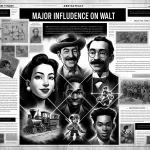-
Indice dei contenuti
- Riassunto di Il vero diario di un indiano a tempo parziale
- Esplorazione dell'identità nel romanzo
- Temi di povertà e resilienza
- Amicizia e lealtà nella storia
- Il ruolo dell'umorismo nell'affrontare problemi seri
- Analisi del personaggio di Arnold Spirit Jr.
- L'impatto del patrimonio culturale sui personaggi
- DOMANDE E RISPOSTE
"Spacchettare la resilienza: Un viaggio attraverso l'identità, l'umorismo e la lotta in 'The Absolutely True Diary of a Part-Time Indian'".
“The Absolutely True Diary of a Part-Time Indian” is a semi-autobiographical novel by Sherman Alexie that follows the life of Arnold Spirit Jr., a young Native American boy growing up on the Spokane Indian Reservation. The story chronicles Arnold’s struggles with identity, poverty, and the pursuit of dreams as he decides to leave the reservation school to attend an all-white high school in a nearby town. The novel explores themes of racism, resilience, and the complexities of cultural identity, while also highlighting the importance of friendship and family. Through a blend of humor and poignant storytelling, Alexie presents a vivid portrayal of the challenges faced by Indigenous youth, making it a powerful commentary on the intersection of personal and cultural struggles. Key characters include Arnold, his best friend Rowdy, and various family members and classmates who shape his journey.
Riassunto di Il vero diario di un indiano a tempo parziale
“The Absolutely True Diary of a Part-Time Indian,” written by Sherman Alexie, is a poignant coming-of-age novel that chronicles the life of Arnold Spirit Jr., a young Native American boy who navigates the complexities of identity, culture, and belonging. Set against the backdrop of the Spokane Indian Reservation in Washington State, the narrative unfolds through Arnold’s unique perspective, marked by his struggles and triumphs as he seeks a better life beyond the confines of his community.
The story begins with Arnold, who is often referred to as Junior, detailing his life on the reservation. He is born with physical disabilities, including a lopsided head and poor eyesight, which contribute to his feelings of isolation and alienation. Despite these challenges, Arnold possesses a sharp wit and a passion for drawing, which serve as both a coping mechanism and a means of self-expression. His life takes a pivotal turn when he decides to transfer from his underfunded reservation school to a predominantly white high school in the nearby town of Reardan. This decision, driven by a desire for a better education and a chance to escape the cycle of poverty and despair that plagues his community, sets the stage for the central conflicts of the novel.
As Arnold navigates his new environment, he faces significant challenges, including racism, bullying, and the struggle to maintain his cultural identity. His transition is fraught with tension, as he grapples with the loyalty he feels towards his friends and family on the reservation while simultaneously striving to fit in with his new classmates. This duality of existence—being a part-time Indian—highlights the broader theme of identity that permeates the narrative. Arnold’s experiences reflect the complexities of belonging to two worlds, each with its own set of expectations and norms.
Throughout the novel, Arnold’s relationships with key characters further illuminate the themes of friendship, family, and resilience. His bond with his best friend, Rowdy, is particularly significant, as it embodies the struggles of loyalty and betrayal. Rowdy initially feels abandoned by Arnold’s decision to leave the reservation, leading to a rift in their friendship. However, as the story progresses, their relationship evolves, showcasing the power of forgiveness and understanding. Additionally, Arnold’s relationship with his family, particularly his parents, reveals the impact of poverty and addiction on their lives. Despite their struggles, Arnold’s parents are portrayed as loving and supportive figures, emphasizing the importance of familial bonds in overcoming adversity.
Moreover, the novel addresses the theme of hope and the pursuit of dreams. Arnold’s journey is marked by moments of triumph, such as his success in basketball and his growing confidence in his artistic abilities. These achievements serve as a testament to his determination and resilience, inspiring readers to reflect on the importance of perseverance in the face of obstacles. Ultimately, “The Absolutely True Diary of a Part-Time Indian” is not just a story about a young boy’s quest for identity; it is a powerful exploration of the complexities of life on the reservation, the challenges of cultural assimilation, and the enduring strength of the human spirit. Through Arnold’s eyes, readers are invited to witness the struggles and triumphs of a young Native American boy as he navigates the intricate tapestry of his existence, making it a compelling and thought-provoking read.
Esplorazione dell'identità nel romanzo
In Sherman Alexie’s “The Absolutely True Diary of a Part-Time Indian,” the exploration of identity emerges as a central theme that intricately weaves through the narrative, reflecting the complexities of adolescence, cultural heritage, and personal growth. The protagonist, Arnold Spirit Jr., commonly known as Junior, embarks on a journey that not only challenges his understanding of self but also highlights the broader implications of identity within the context of Native American life. As Junior navigates the duality of his existence—living on the Spokane Indian Reservation while attending an all-white high school—he grapples with the conflicting aspects of his identity, which serves as a poignant commentary on the struggles faced by many individuals caught between two worlds.
From the outset, Junior’s identity is shaped by his experiences on the reservation, where he confronts the harsh realities of poverty, violence, and systemic oppression. These elements contribute to a sense of belonging that is both comforting and confining. The reservation represents a space where Junior’s cultural identity is deeply rooted, yet it also embodies the limitations imposed by societal expectations and stereotypes. As he reflects on his life, Junior’s drawings serve as a visual representation of his internal conflicts, illustrating the tension between his heritage and his aspirations. Through these artistic expressions, readers gain insight into Junior’s desire to break free from the constraints of his environment while simultaneously honoring his roots.
Transitioning from the reservation to Reardan High School marks a significant turning point in Junior’s exploration of identity. This shift not only exposes him to a different cultural landscape but also forces him to confront the prejudices and misconceptions that accompany his Native American identity. At Reardan, Junior encounters both acceptance and hostility, which further complicates his sense of self. The friendships he forms, particularly with characters like Gordy and Penelope, provide him with a support system that encourages him to embrace his uniqueness rather than hide it. These relationships highlight the importance of connection in shaping one’s identity, as they allow Junior to navigate the complexities of being a “part-time Indian” in a predominantly white environment.
Moreover, the theme of resilience emerges as Junior learns to reconcile the disparate aspects of his identity. His determination to succeed academically and athletically serves as a testament to his strength and ambition, challenging the stereotypes often associated with Native American youth. As he confronts adversity, Junior’s journey becomes one of self-discovery, illustrating that identity is not a fixed construct but rather a fluid and evolving process. This realization empowers him to assert his individuality, ultimately leading to a deeper understanding of who he is beyond the labels imposed by society.
In conclusion, “The Absolutely True Diary of a Part-Time Indian” offers a profound exploration of identity through the lens of Junior’s experiences. By navigating the complexities of cultural heritage, personal aspirations, and societal expectations, Junior’s journey resonates with readers on multiple levels. The novel underscores the idea that identity is multifaceted and shaped by a myriad of influences, ultimately encouraging a broader dialogue about the importance of embracing one’s unique narrative. Through Junior’s story, Sherman Alexie invites readers to reflect on their own identities and the ways in which they navigate the intersections of culture, belonging, and self-acceptance.
Temi di povertà e resilienza
In Sherman Alexie’s “The Absolutely True Diary of a Part-Time Indian,” the themes of poverty and resilience are intricately woven into the narrative, reflecting the harsh realities faced by many Native American communities. The protagonist, Arnold Spirit Jr., commonly known as Junior, navigates life on the Spokane Indian Reservation, where poverty is a pervasive force that shapes the experiences and aspirations of its residents. Through Junior’s eyes, readers gain insight into the systemic issues that contribute to the cycle of poverty, including limited access to quality education, healthcare, and employment opportunities. This backdrop serves not only as a setting but also as a catalyst for Junior’s journey toward self-discovery and empowerment.
As Junior grapples with the challenges of his environment, he embodies the resilience that is often necessary for survival in the face of adversity. His decision to leave the reservation school to attend an all-white high school in a nearby town is a pivotal moment that underscores his determination to break free from the constraints imposed by poverty. This choice, while fraught with challenges, symbolizes a quest for a better life and the pursuit of dreams that extend beyond the limitations of his upbringing. Junior’s resilience is further highlighted by his ability to confront and overcome the obstacles that arise from his decision, including alienation from his peers on the reservation and the struggle to fit in at his new school.
Moreover, the theme of resilience is not solely confined to Junior; it permeates the lives of those around him. Characters such as his best friend Rowdy and his family members exemplify various responses to the pervasive poverty that surrounds them. Rowdy, for instance, initially embodies a more aggressive form of resilience, using anger as a shield against the pain of their circumstances. In contrast, Junior’s parents, despite their struggles with alcoholism and financial instability, demonstrate a profound love and commitment to their children, illustrating that resilience can manifest in different ways. This complexity adds depth to the narrative, allowing readers to appreciate the multifaceted nature of resilience within the context of poverty.
Furthermore, the novel explores the impact of poverty on identity and self-worth. Junior’s experiences highlight the internalized stigma that often accompanies living in poverty, as he grapples with feelings of inadequacy and the desire for acceptance. His journey toward self-acceptance is marked by moments of humor and vulnerability, which serve to humanize his struggles and make them relatable to readers. Through his art and storytelling, Junior finds a means of expressing his pain and aspirations, ultimately transforming his experiences into a source of strength. This creative outlet not only fosters resilience but also serves as a bridge between his two worlds, allowing him to navigate the complexities of his identity as both a Native American and a teenager seeking belonging.
In conclusion, “The Absolutely True Diary of a Part-Time Indian” poignantly addresses the themes of poverty and resilience through the lens of Junior’s experiences. The narrative illustrates how poverty can shape lives while simultaneously highlighting the indomitable spirit of those who strive to rise above their circumstances. Through Junior’s journey, readers are reminded of the power of resilience in the face of adversity, as well as the importance of hope and determination in the pursuit of a better future. Ultimately, Alexie’s work serves as a testament to the strength of the human spirit, even in the most challenging of circumstances.
Amicizia e lealtà nella storia
In "Il vero diario di un indiano a tempo parziale", l'amicizia e la lealtà emergono come temi centrali, che danno forma al viaggio del protagonista. La narrazione, raccontata attraverso gli occhi di Arnold Spirit Jr, detto Junior, esplora le complessità delle relazioni sullo sfondo della sua vita nella riserva indiana di Spokane e della sua decisione di frequentare una scuola superiore prevalentemente bianca. Questa transizione non solo mette in luce le sfide di navigare in ambienti sociali diversi, ma sottolinea anche l'importanza della lealtà tra amici.
At the heart of Junior’s story is his friendship with Rowdy, his childhood companion. Their bond is characterized by a deep understanding and shared experiences, which are rooted in their upbringing on the reservation. Rowdy serves as a protector for Junior, often standing up for him against bullies and providing emotional support in a world that can be harsh and unforgiving. However, as Junior makes the pivotal choice to leave the reservation school in pursuit of better opportunities, the dynamics of their friendship are tested. Rowdy feels betrayed by Junior’s decision, interpreting it as a rejection of their shared identity and the life they have known. This conflict illustrates the fragility of loyalty, particularly when faced with the pressures of change and the desire for personal growth.
As Junior navigates his new environment at Reardan High School, he encounters a different set of challenges that further complicate his understanding of friendship. He is initially met with skepticism and hostility from his new peers, yet he gradually forms new connections that challenge his preconceived notions about loyalty and acceptance. Characters like Gordy and Penelope become significant figures in Junior’s life, offering him friendship that transcends the boundaries of race and socioeconomic status. Through these relationships, Junior learns that loyalty can manifest in various forms, and that true friends support one another’s aspirations, regardless of the circumstances.
Moreover, the theme of loyalty is intricately tied to the concept of community. Junior’s experiences on the reservation highlight the importance of solidarity among its members, even as he grapples with feelings of isolation. The loyalty he feels towards his family and friends on the reservation is juxtaposed with his desire to forge a new path for himself. This internal conflict is emblematic of the broader struggle faced by many individuals who seek to balance their roots with their ambitions. As Junior confronts the realities of his dual existence, he learns that loyalty does not necessitate a singular allegiance; rather, it can encompass multiple relationships that enrich his life.
In addition, the narrative delves into the impact of loss on friendship and loyalty. The deaths of key characters, such as Junior’s grandmother and his sister Mary, serve as poignant reminders of the fragility of life and the bonds that tie individuals together. These losses deepen Junior’s appreciation for the friendships he has cultivated, reinforcing the idea that loyalty is not merely about physical presence but also about emotional support and shared grief.
Ultimately, “The Absolutely True Diary of a Part-Time Indian” presents a nuanced exploration of friendship and loyalty, illustrating how these themes are interwoven with identity, community, and personal growth. Through Junior’s journey, readers are invited to reflect on the complexities of relationships and the ways in which loyalty can evolve in response to life’s challenges. The narrative serves as a testament to the enduring power of friendship, even in the face of adversity, and highlights the importance of remaining true to oneself while navigating the intricate web of human connections.
Il ruolo dell'umorismo nell'affrontare problemi seri
In Sherman Alexie’s “The Absolutely True Diary of a Part-Time Indian,” humor serves as a vital mechanism for addressing serious issues, allowing the protagonist, Arnold Spirit Jr., to navigate the complexities of his life as a Native American teenager. The novel, which is presented in a semi-autobiographical format, employs humor not merely as a tool for entertainment but as a means of coping with the harsh realities faced by Arnold and his community. By infusing comedic elements into the narrative, Alexie creates a space where difficult topics such as poverty, racism, and identity can be explored without overwhelming the reader.
One of the most striking aspects of the novel is how Arnold uses humor to confront the challenges of his existence on the Spokane Indian Reservation. For instance, he often reflects on the absurdity of his circumstances, using wit to articulate the struggles of growing up in an environment marked by economic hardship and social marginalization. This approach not only lightens the mood but also invites readers to engage with the gravity of these issues in a more accessible manner. By framing his experiences through a humorous lens, Arnold demonstrates resilience and a refusal to be defined solely by his circumstances.
Moreover, humor acts as a bridge between Arnold’s dual identities as both a member of the reservation and a student at an all-white high school. As he transitions from the familiar confines of his community to the predominantly white world of Reardan, he encounters a myriad of challenges, including prejudice and isolation. In these moments, humor becomes a survival strategy, allowing him to deflect hostility and build connections with his new peers. For example, Arnold’s self-deprecating jokes about his physical appearance and social awkwardness serve to disarm potential bullies and foster camaraderie with classmates. This clever use of humor not only highlights his intelligence but also underscores the importance of adaptability in the face of adversity.
Furthermore, the novel illustrates how humor can facilitate discussions about grief and loss. The death of Arnold’s beloved grandmother is a poignant moment in the narrative, yet it is through humor that he processes his sorrow. By recalling the eccentricities of his grandmother’s personality and the absurdity of certain situations surrounding her death, Arnold allows himself to grieve while simultaneously celebrating her life. This interplay between laughter and sadness reflects a deeper truth about the human experience: that joy and sorrow often coexist, and humor can provide a necessary respite from pain.
In addition to personal struggles, the novel also critiques broader societal issues, such as systemic racism and the historical trauma faced by Native Americans. Through satirical commentary and humorous anecdotes, Alexie sheds light on the absurdities of stereotypes and the injustices that permeate both the reservation and mainstream society. By employing humor in this context, the author encourages readers to reflect critically on these issues while simultaneously fostering empathy for those affected.
In conclusion, humor in “The Absolutely True Diary of a Part-Time Indian” serves as a powerful tool for addressing serious issues, allowing Arnold to navigate the complexities of his life with resilience and wit. By blending comedy with poignant themes, Alexie not only engages readers but also invites them to confront the realities of identity, loss, and societal injustice. Ultimately, the novel illustrates that humor can be a profound means of coping with life’s challenges, offering both solace and insight in the face of adversity.
Analisi del personaggio di Arnold Spirit Jr.
Arnold Spirit Jr., often referred to as Junior, is the protagonist of Sherman Alexie’s novel “The Absolutely True Diary of a Part-Time Indian.” As a Native American teenager growing up on the Spokane Indian Reservation, Junior embodies the struggles and complexities of identity, belonging, and resilience. His character is marked by a unique blend of vulnerability and determination, which allows readers to connect with his journey on multiple levels.
From the outset, Junior is portrayed as an outsider, not only within his community but also in the broader context of American society. His physical appearance, characterized by a series of medical issues, including a severe case of hydrocephalus, sets him apart from his peers. This condition has left him with a lopsided head and numerous health complications, which contribute to his feelings of inadequacy and isolation. However, rather than allowing these challenges to define him, Junior uses humor as a coping mechanism. His witty observations and self-deprecating jokes serve to lighten the weight of his circumstances, illustrating his resilience and ability to find joy amidst adversity.
As Junior navigates the complexities of adolescence, he grapples with the duality of his existence. He is torn between his life on the reservation and his desire for a better future, which he believes can be found at Reardan High School, a predominantly white institution. This decision to transfer schools is pivotal in Junior’s character development, as it symbolizes his quest for self-improvement and a break from the cycle of poverty and despair that plagues his community. The transition is fraught with challenges, including the alienation he experiences from both his peers at Reardan and his friends on the reservation. This duality highlights the theme of identity, as Junior struggles to reconcile his Native American heritage with his aspirations for a different life.
Moreover, Junior’s relationships with key figures in his life further illuminate his character. His bond with his parents, particularly his father, is complex and layered. While they love him deeply, their struggles with alcoholism and the harsh realities of reservation life often leave Junior feeling unsupported. This dynamic fosters a sense of independence in Junior, as he learns to rely on himself and seek out positive influences elsewhere. His friendship with Rowdy, his childhood companion, also plays a significant role in shaping his identity. Initially, Rowdy represents a connection to Junior’s roots, but as Junior pursues his dreams, their friendship becomes strained, reflecting the broader theme of loyalty and the sacrifices that come with personal growth.
In addition to his friendships, Junior’s interactions with teachers and mentors at Reardan further contribute to his development. Figures like Mr. P, who encourages him to pursue his dreams, serve as catalysts for change in Junior’s life. These relationships underscore the importance of support systems in overcoming obstacles and achieving personal goals. Ultimately, Junior’s journey is one of self-discovery, marked by moments of triumph and heartbreak. His character encapsulates the struggles faced by many young people, particularly those from marginalized communities, as they seek to carve out their own identities in a world that often feels hostile and unwelcoming.
In conclusion, Arnold Spirit Jr. is a richly developed character whose experiences resonate with readers on various levels. Through his humor, resilience, and complex relationships, Junior navigates the challenges of adolescence while striving for a better future. His story serves as a powerful reminder of the importance of identity, belonging, and the courage it takes to pursue one’s dreams against all odds.
L'impatto del patrimonio culturale sui personaggi
Nel romanzo di Sherman Alexie "Il diario assolutamente vero di un indiano part-time", l'impatto dell'eredità culturale sui personaggi è un tema centrale che plasma le loro identità, le loro relazioni e le loro scelte di vita. Il protagonista, Arnold Spirit Jr., comunemente noto come Junior, affronta le complessità della crescita nella riserva indiana di Spokane e allo stesso tempo cerca una vita migliore al di fuori dei suoi confini. Questa dualità dell'esistenza evidenzia la profonda influenza dell'eredità culturale sullo sviluppo del suo carattere e sulle decisioni che prende nel corso della narrazione.
Junior’s cultural heritage is intricately woven into the fabric of his identity. Growing up on the reservation, he is acutely aware of the struggles faced by his community, including poverty, alcoholism, and limited opportunities. These challenges are not merely background details; they are integral to Junior’s understanding of himself and his place in the world. His experiences reflect the broader struggles of Native American communities, illustrating how cultural heritage can both empower and constrain individuals. For instance, Junior’s decision to transfer to a predominantly white high school in search of better educational opportunities is a pivotal moment that underscores the tension between his cultural roots and his aspirations. This choice not only alienates him from his friends and family but also forces him to confront the prejudices and stereotypes that exist outside the reservation.
Moreover, the relationships Junior maintains with his family and friends further exemplify the impact of cultural heritage. His bond with his parents is deeply influenced by their own experiences growing up on the reservation. His mother, a strong yet troubled figure, embodies the resilience of their culture, while his father grapples with the weight of generational trauma. These dynamics illustrate how cultural heritage shapes familial relationships, often complicating them with layers of expectation, disappointment, and love. Junior’s friendship with Rowdy, his childhood companion, also reflects the complexities of cultural identity. Their relationship is marked by loyalty and conflict, mirroring the broader struggles of their community. As Junior seeks to break free from the limitations imposed by their environment, Rowdy’s resistance to change highlights the difficulties of navigating cultural expectations and personal aspirations.
In addition to familial and friendship dynamics, the novel also explores how cultural heritage influences Junior’s interactions with the broader society. His experiences at Reardan High School expose him to a world that is both foreign and enticing. The stark contrast between the affluence of his new school and the poverty of the reservation serves as a constant reminder of the disparities that exist within society. As Junior grapples with feelings of isolation and alienation, he also discovers the power of storytelling as a means of bridging cultural divides. Through humor and art, he learns to articulate his experiences, allowing him to connect with others while remaining true to his heritage.
Ultimately, “The Absolutely True Diary of a Part-Time Indian” illustrates the profound impact of cultural heritage on its characters, shaping their identities, relationships, and life choices. Junior’s journey reflects the complexities of navigating multiple cultural worlds, highlighting the struggles and triumphs that come with such an endeavor. As he learns to embrace his heritage while pursuing his dreams, the novel serves as a poignant reminder of the enduring influence of culture on individual lives. Through Junior’s story, readers gain insight into the rich tapestry of Native American life, revealing the resilience and strength that emerge from the interplay of cultural heritage and personal ambition.
DOMANDE E RISPOSTE
1. **Qual è il riassunto di "Il vero diario di un indiano part-time"?
– The novel follows Arnold Spirit Jr., a Native American teenager who decides to leave his school on the Spokane Indian Reservation to attend an all-white high school in a nearby town. The story explores his struggles with identity, racism, and the challenges of navigating two different worlds.
2. **Quali sono i temi principali del romanzo?
– Key themes include identity and self-discovery, the impact of poverty, the importance of friendship and family, racism and discrimination, and the pursuit of dreams against adversity.
3. **Chi è il protagonista della storia?
– The protagonist is Arnold Spirit Jr., also known as Junior, a 14-year-old boy who is an aspiring cartoonist and faces numerous challenges as he transitions to a new school.
4. **Quale ruolo gioca l'umorismo nel romanzo?
– Humor serves as a coping mechanism for Junior, helping him deal with the hardships of his life, including poverty, loss, and discrimination. It also makes the narrative more relatable and engaging.
5. **In che modo l'ambientazione influenza la storia?
– The setting, primarily the Spokane Indian Reservation and the nearby all-white high school, highlights the cultural and social divides that Junior must navigate, emphasizing themes of isolation and belonging.
6. **Chi sono i personaggi chiave del romanzo?
– Key supporting characters include Rowdy, Junior’s best friend from the reservation; Penelope, a popular girl at his new school; and Junior’s family members, including his parents and grandmother, who shape his experiences and perspectives.
7. **Qual è il significato dei disegni di Junior nella storia?
– Junior’s drawings serve as a form of self-expression and a way to process his emotions and experiences. They illustrate his struggles and triumphs, providing insight into his character and the challenges he faces.”The Absolutely True Diary of a Part-Time Indian” by Sherman Alexie follows the journey of Arnold Spirit Jr., a young Native American boy who decides to leave his school on the Spokane Indian Reservation to attend an all-white high school. The novel explores themes of identity, resilience, and the struggle between cultural heritage and personal ambition. Key characters include Arnold, who grapples with poverty and discrimination; his best friend Rowdy, who represents loyalty and conflict; and various family members who embody the complexities of life on the reservation. Ultimately, the story highlights the importance of hope, the pursuit of dreams, and the challenges of navigating two worlds.






